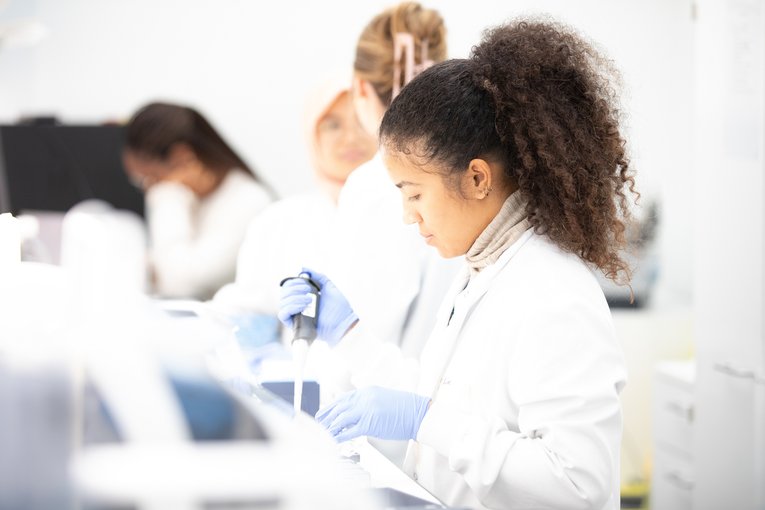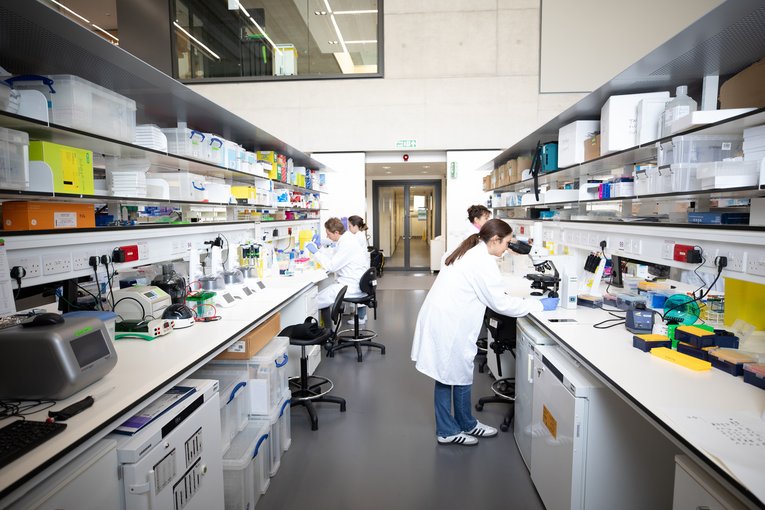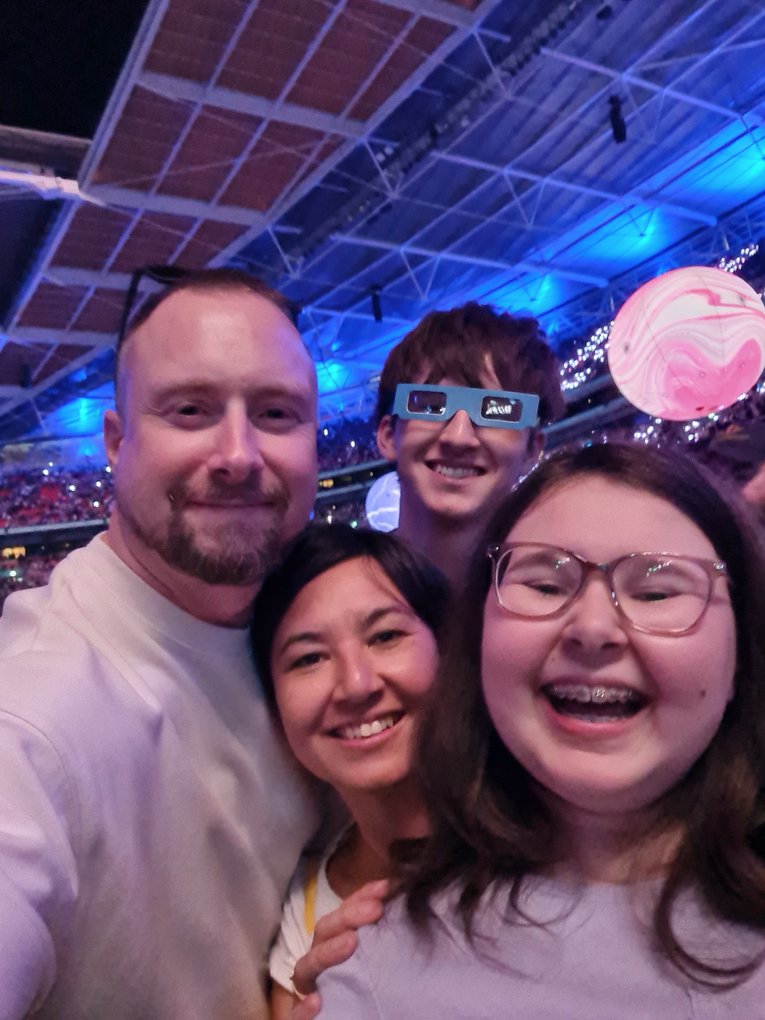
https://www.gosh.nhs.uk/our-research/our-research-infrastructure/nihr-great-ormond-street-hospital-brc/brc-news/quick-and-efficient-new-method-generating-na-ve-stem-cells-lab/
Quick and efficient new method for generating naïve stem cells in the lab
30 Apr 2019, 12:22 p.m.
An advanced new method for generating stem cells quickly and efficiently has been developed by an international team of researchers.These cells could be used to better understand early stage of human development, modelling diseases associate with X-chromosome inactivation dynamics or, in the future, as cell source to repair damaged tissues. The research was led by Professor Nicola Elvassore at UCL Great Ormond Street Institute of Child Health (ICH) and National Institute for Health Research (NIHR) GOSH Biomedical Research Centre (BRC)-supported researcher.
Stem cells have the potential to become any cell in our body and can be used to study a wide range of diseases. A technique called reprogramming is widely used to generate stem cells from adult body cells such as blood and skin. These ‘induced pluripotent stem cells’ have similar characteristics to cells present during the first week of development of the human embryo.
In this study, researchers developed a novel technique that can generate stem cells in a more immature state of development, equivalent to cells found in an early stage 'post-implantation' human embryo. These ‘naïve’ cells allow researchers to get a more complete picture of errors that can occur early on in development and lead to specific diseases.
The method, which was published in Nature Cell Biology, uses an technique called microfluidics where a cocktail of molecules are added to skin cells in microscopic channels made out of biologically compatible silicon. When cells are in a confined space, they can be reprogrammed more efficiently and quickly using far fewer reagents than previous methods, making the process much more cost-effective.
Prof Elvassore, who received funding from the National Institute for Health Research GOSH Biomedical Research Centre’s recent iPSC resource call and the Oak Foundation, anticipates that this new method will become widely used by the scientific community. As well as allowing researchers to gain a understand how conditions develops, these cells could potentially be used to repair damaged tissue, for screening potential new drugs and for a range of other therapeutic uses.
The approach was developed by Professor Elvassore at ICH in collaboration with colleagues at the Department of Molecular Medicine at the University of Padova.

NIHR launches £13.7m investment into brain tumour research
The National Institute for Health and Care Research (NIHR) has announced a £13.7 million investment that will support ground-breaking research to develop novel brain tumour treatments in the UK.

New consortium aims to help improve care for arthritis patients
A new UK-led research group, including Great Ormond Street Hospital and University College London, aims to improve the lives of children, young people and adults with arthritis by defining for the first time what being in ‘remission’ from arthritis truly

Update for patients and families on industrial action - December 2025
As you may be aware, some of our Resident Doctors will be taking part in planned industrial action from 7am on Wednesday 17 December to 7am on Monday 22 December.

‘Ready-made’ T-cell gene therapy tackles ‘incurable’ T-Cell leukaemia
A groundbreaking new treatment using gene-edited immune cells, developed at GOSH and UCL has shown promising results in helping children and adults fight a rare and aggressive cancer

